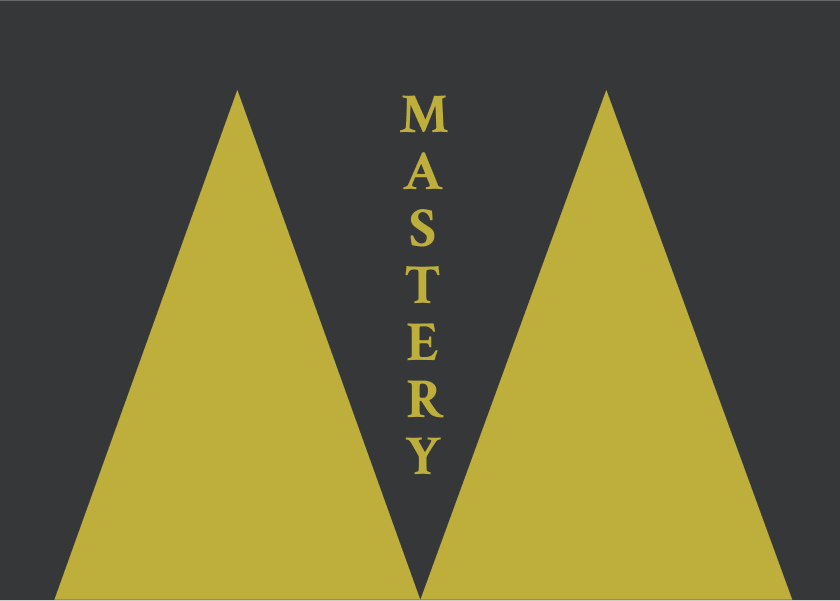Good Habits, Bad Habits by Wendy Wood - Summary
Tired of willpower struggles? Discover the hidden power of your habits! Learn the science behind lasting change and build a life where your goals become automatic.

The following is a summary and review of the book Good Habits, Bad Habits by Wendy Wood.
A Journey into the Science of Lasting Change
Are you tired of setting goals with enthusiastic resolve only to find yourself slipping back into old, unwanted patterns? Do you ever feel like you're battling against your own willpower, struggling to make those positive changes stick? Wendy Wood's Good Habits, Bad Habits: The Science of Making Positive Changes That Stick offers a refreshing and scientifically grounded perspective on why we do what we do and, more importantly, how we can cultivate the good habits that lead to lasting transformation. This insightful book, penned by a leading expert in the field, has garnered popularity for its ability to demystify the complex world of habit formation and provide readers with practical, evidence-based strategies for building a better life.
Table of Contents
- About the Author
- Who Should Read This Book?
- Key Insights and Themes
- Detailed Summary
- Review
- Actionable Takeaways
- FAQs
- Conclusion
About the Author
Wendy Wood, Ph.D., is a distinguished Provost Professor of Psychology and Business at the University of Southern California. With nearly three decades of studying people's habits and over a hundred articles published in scientific journals, Professor Wood is a leading voice in the science of habit formation. Her expertise and rigorous research background lend significant credibility to the insights presented in Good Habits, Bad Habits. Her work has also been featured in prominent publications such as The Washington Post, Los Angeles Times, The New York Times, and Time magazine, further highlighting her authority and the relevance of her research.
Who Should Read This Book?
Good Habits, Bad Habits is an essential read for anyone who has ever struggled to make a change that sticks. This includes:
- Individuals who feel "stuck" in unwanted behaviours, such as those wanting to lose weight but repeatedly falling into old eating habits.
- People who are tired of relying solely on willpower and motivation to achieve their goals.
- Anyone seeking a deeper understanding of the underlying mechanisms that drive their daily actions.
- Those aiming to cultivate positive habits in various areas of life, whether it's becoming a better parent, a more productive employee, a healthier individual, or a more prudent spender.
- Readers who are sceptical of quick-fix solutions and are looking for scientifically sound strategies for lasting behavioural change.
- Individuals interested in the psychology of habits and how our brains and environments influence our actions.
Essentially, if you've ever vowed to make a change and found it challenging to maintain, this book offers valuable insights and practical guidance to help you succeed.
Key Insights and Themes
Here are some of the key takeaways and main ideas explored in Good Habits, Bad Habits:
- Habits operate largely outside of our conscious awareness. They are routine responses performed automatically, often without conscious direction or intent.
- Habit formation is not about what you do, but how you perform an action. The key lies in the automaticity of the behaviour.
- Willpower alone is often insufficient for long-term change. Relying solely on motivation is exhausting and often leads to failure.
- Context plays a crucial role in triggering habits. Our surroundings and environmental cues powerfully influence our automatic responses.
- Repetition is a critical ingredient in habit formation. Consistent performance of a desired action strengthens the neural pathways that make it automatic. Different behaviours require varying amounts of repetition to become habitual.
- Rewards reinforce habit formation. Positive outcomes associated with a behaviour increase the likelihood of it becoming a habit. Intrinsic rewards, stemming from the enjoyment of the activity itself, can be particularly powerful.
- High "self-control" individuals often succeed not just through willpower, but by structuring their environment to support desired habits and minimise friction for unwanted ones. They understand the power of context.
- Habits provide resilience, especially when conscious decision-making is strained by stress, tiredness, or distraction.
- Understanding the science of habit formation empowers us to take control of our behaviours and build a more integrated and effective way of life.
Detailed Summary
Part I: How We Really Are
1. Persistence and Change
The book opens with a relatable scenario: the author's cousin's repeated attempts to lose weight, highlighting the gap between intention and sustained action. It introduces the concept of feeling "stuck" and unable to change, a common human experience. The limitations of relying solely on initial resolve and public declarations are discussed. The chapter emphasizes that while some initial changes rely on executive control, many life goals require consistent, maintained actions over long periods. Habit is presented as a "second nature," as Cicero put it, suggesting its powerful and often unconscious influence.
2. The Depths Beneath
This chapter delves into the nature of habit, asserting that habit refers to how you perform an action, not what the action is. A study is described where participants recorded their thoughts while performing daily behaviours. Actions coded as automatic were those performed without conscious direction, indicated by thoughts unrelated to the task at hand. This highlights that habits operate largely outside our conscious awareness. The chapter notes the abundance of often scientifically uninformed advice on forming good habits, underscoring the need for a deeper understanding of the underlying mechanisms.
3. Introducing Your Second Self
The habit-forming process is explored at a neurological level, starting with conscious decisions and intentions to achieve a desired outcome. The first attempts at a new behaviour involve active decision-making. Through repetition, these initially conscious actions can become automatic, with the brain adapting to perform the task more efficiently. This "second self," our habitual mind, operates quietly and efficiently, leading us to sometimes mistakenly believe we consciously decided to perform these routine actions.
4. What About Knowledge
This section examines the relationship between knowledge and behaviour, suggesting that simply knowing what we should do doesn't always translate into action. Habits can persist even when we are consciously aware of contradictory information or intentions. The key feature of habit is its operation outside of our conscious awareness, making knowledge alone an insufficient tool for change.
5. What About Self-Control
The chapter challenges the notion that successful people solely rely on willpower and self-denial. Instead, it proposes that successful individuals often develop effective habits that allow them to meet their goals reliably without constant struggle. Bill Gates is presented as an example, admitting his past procrastination and the need to form the right habits for success. This suggests that building beneficial habits can be more effective than constantly exerting self-control.
Part II: The Three Bases of Habit Formation
6. Context
This chapter emphasizes the powerful influence of our environment and context cues on our habits. Individuals with high "self-control" not only know how to form good habits but also understand how to place themselves in contexts that facilitate desired actions and hinder unwanted ones. They actively seek out supportive environments and avoid tempting situations. The concept of "friction" is introduced as a key element in shaping behaviour, where manipulating our surroundings can make desired actions easier and undesired ones more difficult.
7. Repetition
Repetition is highlighted as a critical ingredient in the habit-formation process. A study is cited showing that different behaviours require varying amounts of repetition to become automatic, ranging from around 65 days for eating something healthy to 91 days for exercise. While repetition is necessary for habits to form, the chapter cautions against the idea that it is always sufficient for achieving excellence. Deliberate practice, focused on improvement, is necessary for skill development.
8. Reward
The role of rewards in reinforcing habits is explored. The "Fun Theory" public service campaign by Volkswagen demonstrates how intrinsic rewards, such as enjoyment and satisfaction, can motivate desired behaviours. A study on exercise habits showed that students who found exercise enjoyable were more likely to form a robust habit compared to those who exercised out of guilt or obligation, even if the frequency was the same. Focusing on the intrinsic rewards of an activity can foster automaticity.
9. Consistency Is for Closers
This chapter highlights that stable contexts are essential for forming new habits. Variety weakens habits because it disrupts the reliable cues needed to trigger automatic behaviors. To establish new desired habits, it's crucial to arrange your life to reliably and unfailingly cue those habits. Consistent routines in terms of location, time, and associated actions help habits take hold. Without this consistency, habit development will be slow.
10. Total Control
Chapter 10 argues that achieving desired behaviors is more effectively done by controlling the environment and establishing supportive habits, rather than relying on willpower alone. Research shows that individuals who control their environment are more successful than those who solely use self-control. People with high "self-control" succeed by forming good habits and placing themselves in contexts that support their goals.
Part III: Special Cases, Big Opportunities, and the World Around Us
11. Jump Through Windows
This chapter explores how disruptions in our routines can create opportunities to become aware of and change our habits. The example of picking up an old book and rediscovering the enjoyment of reading illustrates how a change in circumstances can lead to the formation of a new, positive habit.
12. The Special Resilience of Habit
Habits are shown to be particularly influential during times when conscious decision-making is compromised by stress, tiredness, distraction, or lack of ability. In such situations, we tend to fall back on our automatic responses. This underscores the importance of establishing good habits so that the habitual choice is often the right choice.
13. Contexts of Addiction
The chapter touches upon bad habits and addiction, noting that while not all bad habits are equal, substance use disorders can be viewed as maladaptive habits that severely impact individuals and society. Context plays a significant role in triggering addictive behaviours.
14. Happy with Habit
Chapter 14 suggests that repeated exposure to behaviors can lead to a liking for them, making positive habits more sustainable. This "mere exposure" effect means that by doing something repeatedly, we can grow to enjoy it. Routines also provide feelings of safety, confidence, and well-being. Furthermore, habits can contribute to a sense of meaning in life. Ultimately, the chapter argues that habits can evolve from being a means to an end into the goal itself, fostering a more integrated and happier existence.
15. You Are Not Alone
This chapter argues that our social environment and default options have a significant impact on our behavior. Our social surroundings and the behaviors of those around us can become our defaults, influencing individual choices. Even small changes in environmental defaults can have a large societal impact. Therefore, understanding and altering the surrounding social and environmental context is crucial for behavior change.
Review
Good Habits, Bad Habits offers a well-researched and accessible exploration of the science behind habit formation. One of its key strengths is its ability to translate complex psychological research into practical insights that readers can apply to their own lives. The book effectively debunks common misconceptions about willpower and provides a more nuanced understanding of the automatic nature of our behaviours. Wendy Wood's expertise shines through, lending credibility and depth to the strategies presented. The numerous real-world examples and anecdotes make the concepts relatable and engaging.
However, some readers might find that while the book provides a solid theoretical foundation, the specific "how-to" advice could be more granular in certain areas. While the principles of context, repetition, and reward are clearly explained, the application of these principles to highly specific habit changes might require further individual exploration and experimentation. Nevertheless, the book serves as an invaluable guide for anyone seeking to understand and harness the power of habits for lasting positive change.
Actionable Takeaways
Here’s how to apply these lessons in real life:
- Become aware of your existing habits. Pay attention to your daily routines and the cues that trigger them. Are these habits serving you well, or are some hindering your goals?
- Focus on context. Identify the environmental cues associated with your desired habits and try to make those cues more prominent. For unwanted habits, try to modify or avoid the triggering contexts.
- Start small and focus on repetition. Don't try to overhaul everything at once. Choose one or two habits you want to cultivate and focus on consistent repetition. Remember that it takes time for habits to become automatic.
- Make desired habits easy and rewarding. Reduce friction for good habits by making them convenient and immediately satisfying. Introduce rewards, especially intrinsic ones, to reinforce the behaviour.
- Be patient and persistent. Understand that setbacks are a normal part of the habit-formation process. If you slip up, don't give up. Return to your desired routine as quickly as possible.
- Leverage disruptions. If your routine changes (e.g., moving house, starting a new job), use this as an opportunity to consciously create new, positive habits.
FAQs
- What is "Good Habits, Bad Habits" about? "Good Habits, Bad Habits" explores the scientific principles behind how habits are formed and how we can leverage this knowledge to create positive changes that stick. It delves into the roles of context, repetition, and reward in shaping our automatic behaviours and offers practical strategies for breaking unwanted habits and building good ones.
- Is "Good Habits, Bad Habits" worth reading? Yes, for anyone who wants to understand why they do what they do and how to make lasting positive changes. The book offers a scientifically grounded and practical approach to habit formation, moving beyond simplistic advice and providing actionable strategies based on research.
Conclusion
Wendy Wood's Good Habits, Bad Habits provides a compelling and insightful journey into the science of lasting change. By understanding the often unconscious forces that drive our daily actions, we can move beyond the limitations of willpower and strategically cultivate the habits that lead to a more fulfilling and successful life. This book empowers readers to take control of their behaviours by leveraging the powerful mechanisms of context, repetition, and reward. If you're ready to move beyond good intentions and build habits that truly stick, "Good Habits, Bad Habits" is an invaluable guide.
As an Amazon Associate, ShelfHelp may earn money from qualifying purchases. Needless to say, ShelfHelp only includes affiliate links to books we recommend and think are worth your time reading.




